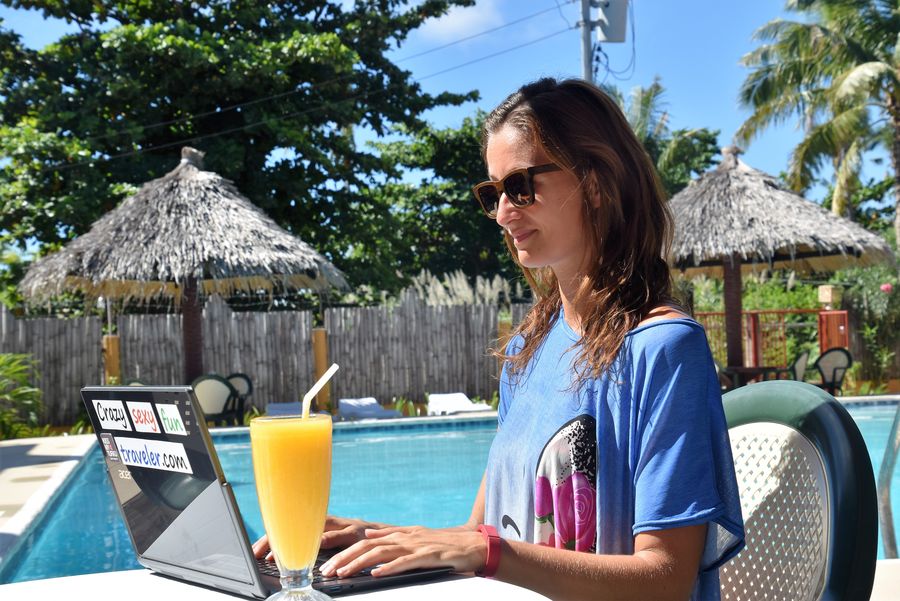
In the early days of remote work, digital nomadism often conjured up images of sun-soaked freelancers working from beach cafes in Bali, sipping coconuts while typing away on their laptops. That version still exists, but digital nomadism has evolved—and what we now call Digital Nomadism 2.0 reflects a deeper shift. It’s no longer just about travel and freedom; it’s about building sustainable lifestyles, managing cross-border logistics, and integrating into global communities while maintaining a meaningful work-life balance.
A New Phase Of Global Living
The pandemic acted as a massive accelerant to the digital nomad movement. With companies forced into remote operations, many discovered that location independence didn’t mean a drop in productivity. Now, instead of being reserved for freelancers and creatives, digital nomadism includes remote employees, startup founders, consultants, and tech professionals. This evolution has made digital nomadism more structured, with more attention on health insurance, tax obligations, and visa regulations—things that were often afterthoughts before.
Nomads in this new era are making long-term lifestyle choices rather than temporary escapes. They aren’t just looking for the next Instagrammable location—they’re seeking visa stability, reliable Wi-Fi, and communities that offer professional and personal growth. Living across continents has become less about running away from structure and more about designing a flexible, fulfilling lifestyle that works across time zones.
Beyond Tourist Hotspots
Digital nomadism is moving away from oversaturated destinations. Places like Chiang Mai, Medellín, and Lisbon remain popular, but seasoned nomads are now looking for emerging hubs with lower costs, fewer tourists, and stable infrastructure. Cities in Eastern Europe, Central America, and even parts of Africa are rising on the radar. Tbilisi, Dakar, and Mexico City are becoming alternatives to the typical hotspots, offering cultural richness and affordability.
With this expansion, digital nomads are also more mindful of their impact. Tourism fatigue, inflation, and gentrification in traditional nomad hubs have led to greater awareness of how transient populations affect local economies. The 2.0 generation of nomads is increasingly intentional about contributing to local communities, supporting small businesses, and engaging in responsible travel.
Work-Life Structure Across Time Zones
Living across continents sounds glamorous until you’re answering Slack messages at 3 a.m. Time zone management is now one of the major challenges and skillsets in digital nomadism. While asynchronous work has become more common, balancing work obligations with personal health and boundaries is critical.
This new generation of nomads prioritizes structured daily routines and sets clear boundaries with employers or clients. Tools like Google Calendar, Notion, and Slack integrations help streamline communication, but discipline is still key. It’s not unusual for nomads to choose locations that align with their working hours—even if that means sacrificing the allure of exotic destinations for logistical ease.
Many also plan their movements based on “time zone compatibility” rather than weather or cost. For example, Europeans working with U.S. clients might choose the Canary Islands or Portugal for time alignment. These strategic decisions define the new nomadic mindset: smart, adaptable, and pragmatic.
Visas And Infrastructure Catching Up
Governments have taken notice of the digital nomad boom. Countries like Estonia, Barbados, and Costa Rica now offer digital nomad visas that allow professionals to live and work legally for extended periods. This has opened the door to a more legitimate, less risky version of remote global living. With the rise of legal frameworks supporting digital nomads, more people can avoid the uncertainty of overstaying tourist visas or juggling visa runs.
Beyond visas, infrastructure is catching up too. Coworking spaces are evolving into community hubs that offer not just fast internet and good coffee but also social events, business networking, and wellness programs. Many countries are investing in fiber-optic internet, flexible accommodation options, and even tailored health insurance plans to attract long-term remote workers.
Community And Connection Over Constant Travel
Digital Nomadism 2.0 places less value on constant movement and more on cultivating community and routine. While travel remains a core part of the lifestyle, many nomads are choosing to slow down. Instead of hopping from country to country every few weeks, they’re setting up base in one place for several months, sometimes even years. This shift allows them to build real relationships, get involved in local culture, and create a semblance of stability.
Online communities, meetups, and mastermind groups are also crucial. Remote workers can now find others with similar lifestyles through platforms like Nomad List, Meetup, and even niche Facebook groups. These communities provide advice, friendship, and accountability—an antidote to the isolation that often came with earlier versions of digital nomadism.
Looking Ahead
As the global workforce continues to decentralize, the digital nomad lifestyle will likely become even more mainstream. What was once considered unconventional is now being embraced by companies looking to reduce overhead costs, tap into a global talent pool, and offer more flexibility to their employees.
Yet, success in this lifestyle isn’t just about packing a bag and booking a one-way ticket. Digital Nomadism 2.0 requires planning, discipline, cultural sensitivity, and long-term thinking. It’s about finding the balance between freedom and responsibility, adventure and routine, work and life.
Here are some helpful resources to explore:
https://c2bir.org/
https://seabreezetinyhomes.com/
https://lidolimarangi.it/
https://situspokerbagus.com/
https://mvcfashionn.com/
https://informagiovanicirie.net/
https://ebrain-news.com/
https://cbdisolateherms.com/
https://cbdcrowdfund.com/
https://pokernews.info/
https://rospedia.com/
https://avataresyfirmas.com/
https://onvd.org/
https://thinkingcreatively.org/
https://tvoicelessons.com/
https://halfashoestring.com/
https://ipsecurityforum.it/
https://visitandrun.com/
https://iraq-live.com/
https://fashioncn.org/
https://healthcareforgunner.com/
https://lookoff.co/
https://free-download-casino.com/
https://freshamericannews.com/
https://steelvalleyarts.org/
https://homeinsuredbyus.com/
https://marijuanadispensarynearmeshop.com/
https://simsoncasino.com/
https://fvtlaw.net/
https://atlanticcwm.com/